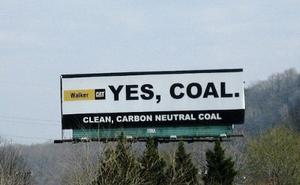Energy futuresFutureGen 2.0 clean-coal project awarded $1 Billion in funding
The Obama administration awarded $1 billion to an Illinois project that aims sharply to reduce greenhouse-gas emissions from coal-fired power plants; this was but the latest move in a long-running saga aiming to prove coal’s viability as a source of fuel amid widespread pressure to combat climate change

The quest for clean coal receives a financial boost // Source: treehugger.com
The Obama administration last Thursday awarded $1 billion to an Illinois project that aims sharply to reduce greenhouse-gas emissions from coal-fired power plants. This was but the latest in a long-running saga aimed at proving coal’s viability amid widespread pressure to combat climate change.
The new project, known as FutureGen 2.0, replaces an earlier plan to build a first-of-a kind, clean coal power plant in Illinois using a different technology. Supporters of the latest version say it will create jobs and reduce greenhouse-gas pollution. Opponents contend it is a waste of money and thinly veiled reward for President Barack Obama’s home state.
The Wall Street Journal’s Siobhan Hughes and Stephen Power write that the move is the latest development in the roller-coaster history of the concept, part of a controversial effort by Washington and the coal industry to prove that coal can be burned without releasing heat-trapping gasses into the atmosphere. The George W. Bush administration launched the first incarnation of FutureGen in 2003, only to cancel it five years later, citing cost overruns (see “King coal, I: U.S. ends FutureGen funding; clean coal future unclear,” 12 February 2008 HSNW; “King coal, II: Administration restructures approach to clean coal funding,” 13 February 2008 HSNW; and “King coal, III: DOE makes case for FutureGen restructuring,” 14 February 2008 HSNW).
The project got a new shot last year with the inauguration of Obama, who supported the venture as an Illinois senator and vowed repeatedly on the campaign stump to support clean-coal projects.
The U.S. Energy Department said the money would go to the FutureGen Alliance, the same group that backed the original clean coal project, along with Ameren Corp., Babcock & Wilcox, and Air Liquide Process & Construction Inc. The money will help retrofit a now-shuttered Ameren coal-fired power plant in the western Illinois town of Meredosia and help establish a pipeline network to transport and store more than one million tons of carbon-dioxide a year in Mattoon, Illinois, the site of the original project.
An Energy Department spokesman also defended the project’s location, saying Mattoon’s geological characteristics make it the best site in the country to build such a facility. “This is a site that can handle 50 million tons of CO2 per year for 50 years,” he said.
Hughes and Power notes that the project represents the first commercial-scale demonstration of advanced oxy-combustion technology. Oxy-combustion burns coal with a mixture of oxygen and carbon dioxide instead of air to produce a concentrated carbon-dioxide stream for “safe, permanent storage,” the department said.
If successfully applied, the technology could help existing coal-fired power plants reduce greenhouse-gas emissions without shifting to natural gas, and also meet proposed tougher new Environmental Protection Agency (EPA) regulations of traditional pollutants such as mercury.
The original FutureGen project was intended to be the first commercial-scale project that combined technology to capture and store carbon-dioxide emissions with coal gasification, a process in which heat and pressure are applied to coal, creating a synthetic gas that fuels turbines to generate electricity. FutureGen leaders struggled to line up backers and some members of the alliance pulled out in order to start their own projects.
